Success Story: Chip-Scale Atomic Clock
NIST’s chip-scale atomic clock (CSAC) has it all: technology innovation, a patent, tech transfer, commercialization, sales, important real-world applications and even museum-level fame.
NIST has long been a leader in the development of atomic clocks, going back to the 1940s, and began supporting research on a chip-scale version more than 20 years ago.
Many elements came together to bring the CSAC to a ready market:
- a lead researcher who is among NIST’s most prolific inventors;
- known needs for compact atomic clocks;
- a decade of military funding for an R&D plan with specific milestones; and
- an environment that generated interactions between government and industry.
Conventional compact atomic clocks, developed mainly for cellphone base stations, can be held in the palm of your hand. The chip-scale versions are less precise but smaller and battery operated, about one-seventh the overall size and using about one-fiftieth as much power as their larger ancestors. These features are so useful that more than 100,000 commercial chip-scale units have been sold for a variety of applications, including oil and gas exploration and military equipment such as tamper-proof GPS receivers. Researchers are now working on the next generation — chip-scale atomic clocks operating at higher frequencies and with potentially higher performance.
NIST Contributions
NIST inventor John Kitching began working on parts of the CSAC technology in 1999. He recalled that throughout the 1990s, several groups were developing compact atomic clocks to meet demand created by growing numbers of cellphone base stations. Kitching and his former group leader, Leo Hollberg, now a professor at Stanford University, started work on compact atomic clocks based on coherent population trapping (CPT). This method involves all-optical laser excitation of the atoms, which made it possible to reduce device size and complexity compared with traditional atomic clocks that use microwaves. Several other groups in the United States, Canada and Italy had been using CPT going back to the 1980s.
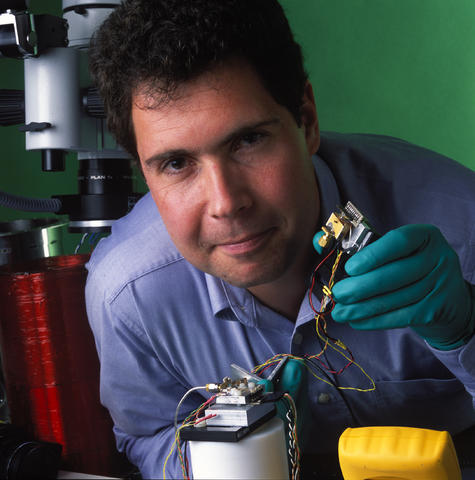
The original NIST devices had physics packages of a few square centimeters in volume and were based on glass-blown vapor cells and a type of semiconductor diode laser called vertical-cavity surface emitting lasers (VCSELs). Kitching and Hollberg knew that Westinghouse Electric Corp. had demonstrated a miniature atomic clock using VCSELs.
NIST managers eventually put Kitching and Hollberg in touch with the Defense Advanced Research Project Agency (DARPA), which had funded the Westinghouse work.
The NIST team began discussions with DARPA program manager Bill Tang. Kitching and Hollberg’s discussions with Tang made them aware of silicon micromachining, and they began to consider a new approach, which resulted in U.S. Patent 6,806,784 B2, “Miniature frequency standard based on all-optical excitation and a micro-machined containment vessel.” NIST filed the provisional patent on July 9, 2001, and the patent was issued on Oct. 19, 2004.
This patent covers the invention of the chip-scale atomic clock, a spinoff chip-scale atomic magnetometer, and silicon micromachining of the vapor cell that contains the atoms in both devices. Today, the patent is in the public domain, which means it can be used without being licensed. Two companies are selling commercial chip-scale atomic clocks, with at least some NIST influence.
“During the period January-March 2001, I remember dropping absolutely everything else I was working on to focus on CSAC,” Kitching said. “I read a huge number of papers on silicon micromachining, a subject that I was not very familiar with. I also spent a lot of time investigating ways to bond wafers together, which was critical for sealing the cells closed. I also did a lot of calculations to estimate the stability of a potential chip-scale atomic clock, as a function of the size of the device. I believe these calculations led to the eventual technical specifications of the DARPA CSAC program.”
Tech Transfer: Connecting Government and Industry
In 2001, DARPA funded a program to develop a commercial CSAC in support of military needs for secure wireless communication and jam-resistant GPS receivers. Jamming — overwhelming the system with interference — was a big problem with GPS during the wars in Iraq and Afghanistan going on at the time, Kitching recalled. A compact atomic clock would give a receiver its own timing signal, significantly reducing the effects of jamming.
For the DARPA program, a number of teams were formed. Participants included NIST, a DOE lab, a nonprofit lab, seven companies and two universities:
- National Institute of Standards and Technology (NIST)/University of Colorado;
- Symmetricom (now Microchip)/Draper Laboratory/Sandia National Laboratories;
- Teledyne Scientific/Rockwell Collins/Agilent;
- Honeywell Aerospace; and
- Sarnoff/Princeton University/Frequency Electronics.
Various potential applications beyond jam-resistant GPS receivers were also identified, such as underwater timing and navigation, ad hoc self-assembling navigation networks for first responders and military operations, automobile collision avoidance systems, and time and frequency sources for use in high-vibration environments.
The program also laid out a multiyear schedule with milestones such as basic physics research, building physics packages, prototyping, demonstrations, testing and production.
“The NIST team made many of the first key demonstrations: demonstration of micro-electromechanical system [MEMS] vapor cells, first demonstration of a functional CSAC physics package, and first demonstration of a chip-scale atomic magnetometer,” Kitching said. “While I think these results were used by other teams as a guide, it should be emphasized that they had their own ideas that were described in their initial proposals and were largely working independently from us.”
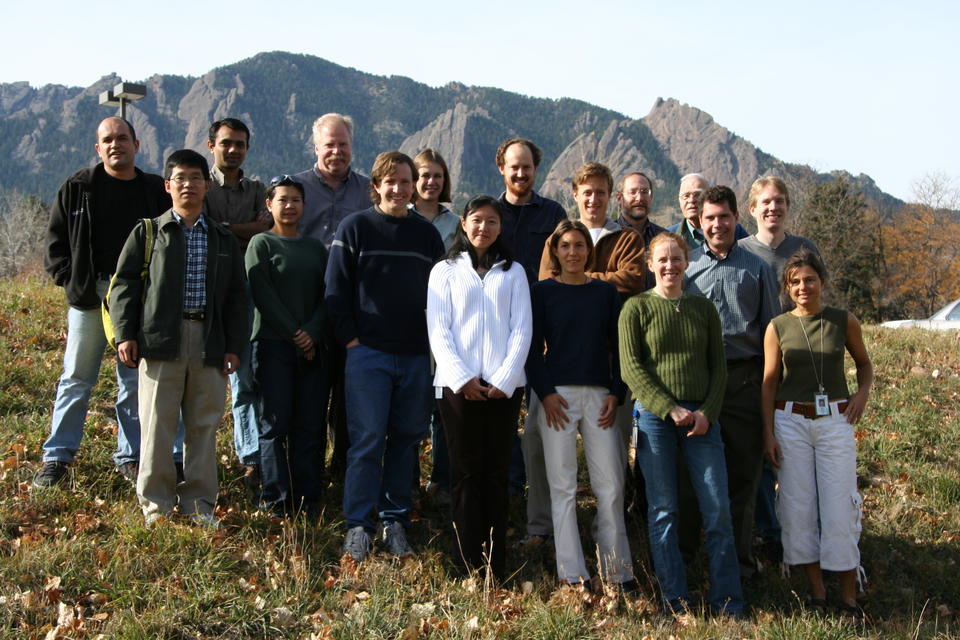
“We did regularly help out the other teams, sharing our insights and processes as we developed them,” Kitching added. “We also presented our latest results on our work every six months at DARPA principal investigator meetings. I believe the mechanism for tech transfer was perhaps a little different than it normally is, in that we were developing the core technology at more or less the same time we were interacting with companies. And the companies were using this information contemporaneously in developing their products.”
“The major significant contributions that NIST made to CSAC R&D were the result of the insight and hard work of John Kitching, Svenja Knappe and their students and postdocs,” Hollberg said recently. “NIST provided an environment that generally supported both basic and applied research projects and the flexibility to do research funded by external agencies.”
“Critical factors in the success of the CSAC program were: an identified need for a battery-powered compact atomic frequency reference; long-term funding from DARPA at levels that enabled real progress on the science, technology and engineering; and engagement of government labs, universities and industry.”
DARPA funded the work until 2008, and after that a U.S. Army program pushed the technology to commercial reality. NIST’s funding for the effort ended in 2006, and Kitching went on to develop other devices such as magnetometers, photonically integrated wavelength references and chip-scale atomic clocks operating at optical frequencies, which could offer higher performance.
“I think the continued funding of the work by the Department of Defense was critical to the ultimate release of a product,” Kitching said. “Several tens of millions of dollars were spent on this. Given that the entire market for atomic clocks is on the order of $200 million a year, it would have been hard for industry to supply the funding for this work from internal R&D budgets.”
Bill Tang, the original DARPA program manager, now a professor at the University of California, Irvine, also emphasized the importance of military support.
“The key role that DARPA played in the discovery and advancement of forefront technologies, particularly in the case of the chip-scale atomic clock, was the facilitator of high-risk research with potential high payoff,” Tang said recently. “Through this role, DARPA assembled a group of diverse experts to work on a very hard problem, such as miniaturizing an atomic clock that occupied an entire room onto a millimeter-scale chip. The key factors of the success of this approach was that DARPA was willing to listen to experts, identified the potentials, provided the resources, and allowed exciting research to happen. I was humbled and greatly gratified to be part of the process and seeing the success of the program now expanding far beyond my imagination — the NIST on a Chip program.”
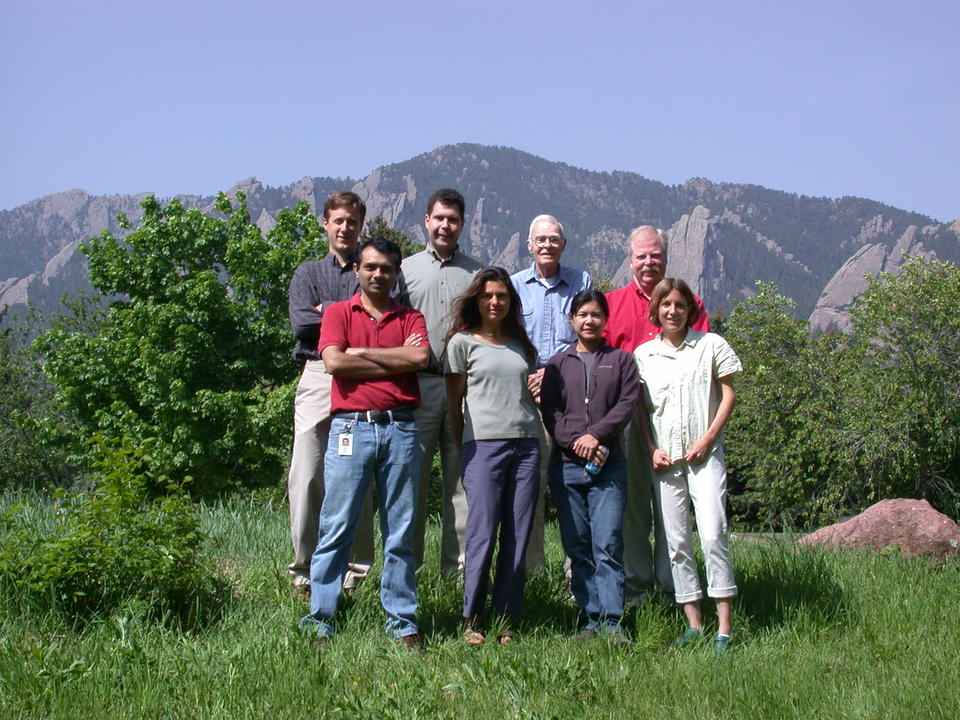
Clark T.-C. Nguyen, the second and main DARPA program manager, now a professor at the University of California at Berkeley, said the CSAC almost didn’t happen due to pervasive early doubts that it was even possible.
“For the advent of CSAC, we should actually thank non-experts who specialized in MEMS plus a minority of open-minded atomic physicists — including and especially John Kitching — for seeing through the technical barriers of miniaturization and understanding that there are many applications out there that do not require NIST F1-like accuracy and stability but could benefit from performance better than available from quartz oscillators,” Nguyen said. “The success of CSAC is a great example of the triumph of thought diversity, where diverse perspectives from atomic physicists and MEMS researchers combined to create something that probably would not have materialized otherwise.”
“The Army funded the CSAC technology to mature its manufacturing technology, reduce manufacturing cost, and foster multiple vendors, yielding another vendor in addition to the industry leading vendor,” said Yoonkee Kim of the U.S. Army Combat Capabilities Development Command C5ISR Center. “Securing multiple vendors is a part of formula to ensure sustaining critical defense industry, maintaining supply chain, and reducing system procurement cost. Realizing even lower cost is the key for CSAC to be accepted in more applications, the Army continues to provide funding to further reduce its manufacturing cost.”
“To turn a new technology into a commercial product, a market attractive to vendors needs to exist to motivate them to make their own capital investment on manufacturing and productizing it,” Kim added. “Lessons from CSAC for a successful commercialization of a new technology include that it's ideal to understand critical needs for military or commercial applications from the start of development.“
Commercialization
One of the DARPA program participants, Symmetricom, developed the first commercial CSAC. The company, which became Microsemi and is now part of Microchip Technologies Inc. (Beverly, Massachusetts), launched the CSAC in 2011 and has been in high-volume production, with well over 100,000 units sold. Microsemi credited NIST for pioneering the CPT technique, which reduced size, weight and power needs compared with conventional gas cell clocks.
“Westinghouse and NIST were the two organizations that drove the technology and showed it was possible,” said Peter Cash, Microchip’s associate director for clock products. “NIST’s role has been to demonstrate that the technology is possible.”
Cash credited the strength of his DARPA team, which included Draper Laboratory and Sandia National Laboratories, for the success of its CSAC product. He also noted that Microchip personnel have had many discussions with — and even hired — several NIST staff, adding, “There is lots of DNA from NIST in our organization.”
A major application area for CSAC devices is underwater sensors and timing for seismic research or gas and oil exploration. Kitching explains: “One way of monitoring oil fields is to set off an acoustic wave, usually by an explosion of some sort, and then monitor how that wave is reflected off various rock strata underground using seismometers. To get the phase of the reflected wave correct, you need all the seismic sensors to be synchronized. This can be done using GPS, but for underwater oil fields, such as in the Gulf of Mexico, the GPS signal is not available and any clock that is deployed down there needs to be able to run on a battery since there is no power. So CSACs provide the timing for this.”
Military applications include anti-jam and anti-spoofing GPS receivers and autonomous positioning systems, mainly for the Army but also the Air Force and Navy, Cash said. (Spoofing involves sending false signals.) The CSAC also went into space on the CHOMPTT satellite, where it provides timing for laser ranging, he said. (Laser ranging is a technique for determining how far you are from another object. You shoot a laser pulse at the thing you’re trying to measure and time how long it takes to bounce back to you. Good timing results in accurate measurements of how far away an object is.) Cash noted that it can take years for a device to be qualified for military use, so the major growth in this market has been recent.
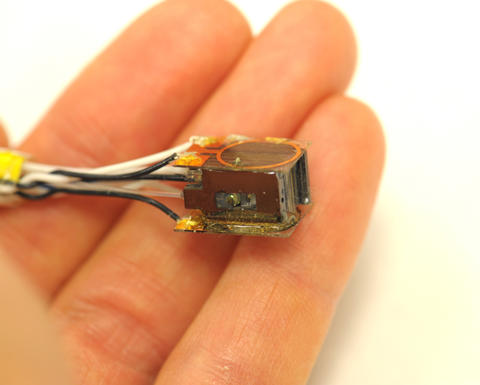
For the military, DARPA reported that the CSAC program resulted in commercially available technology and that it achieved a hundredfold size reduction while consuming 50 times less power than traditional atomic clocks. (This size comparison refers to the volume of the core components, or physics package.)
Teledyne Scientific — also part of the original DARPA program — is also now selling a commercial CSAC.
The National Research Council, in one of its periodic reviews of NIST laboratories, praised the NIST Time and Frequency Division’s “outstanding record of sharing its scientific and technical advances and stimulating new industries for commercial, military, and scientific use.” The report cited the wide use of CSACs for military and commercial applications and applications for the spinoff technology, chip-scale atomic magnetometers, in the oil industry and medicine.
NIST’s chip-scale atomic magnetometers have significant commercial potential. Five companies (one a NIST spinoff) are working on chip-scale magnetometers, Kitching said. In one example, Physics World’s top 10 breakthroughs of 2019 included a wearable “bike helmet” sensor that safely monitors brain activity — a commercial device based on NIST technology.
“The beauty of the CSAC work is that it was a direct response to another agency’s need that NIST was able to respond to because of our broad expertise across many areas of science and engineering,” said Jim Olthoff, NIST associate director for laboratory programs. “There are few places on earth that possess the combination of talent and capabilities to successfully develop something as amazing as a chip-scale atomic clock. And I guarantee that more developments like CSAC are coming to meet the measurement needs of the world because of the great talents and vision of NIST scientists.”
Other Impacts
NIST’s original chip-scale clock and the first commercial version are significant enough to be on display together at the Smithsonian Institution’s Air and Space Museum in Washington, D.C.
The exhibit website states: “Chip-scale atomic clocks (CSAC) have components comparable in size to the integrated circuits (‘chips’) used in modern electronic equipment. They were first developed by the Defense Advanced Research Projects Agency (DARPA) and the National Institute of Standards and Technology (NIST) in 2004. The first commercial version is this cesium CSAC with model number SA.45s, produced by Symmetricom, Inc., in Beverley, Mass., and sold beginning in 2011. Its ‘physics package’ (the set of components that generate the cesium frequency) occupies less than 1 cubic centimeter, thousands of times smaller and lighter than the beam tube of a conventional cesium atomic clock and operates on very different principles. Furthermore, the energy consumption is much less, making extended operation on battery power feasible. Developing such a small clock required many innovations in several disciplines, including semiconductor laser technology, silicon processing, vacuum-packing and firmware algorithms. Its portability and low energy consumption have made possible many new applications, such as geophysical sensors, backpack jammers for improvised explosive devices, backpack military radios, unmanned aerial vehicles (drones) and military GPS receivers. … ”
The Future
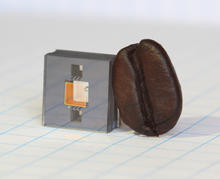
Microchip envisions future high-volume commercial applications such as micropositioning systems for cars and robots, Cash said. But that will require further development to achieve cost reductions (size, weight and power and cost or SWaP-C) necessary to serve those markets.
NIST continues to conduct research on various types of portable atomic clocks. Kitching’s group recently demonstrated the heart of a next-generation CSAC, which Draper is developing further. And Kitching keeps an eye on the trajectory of his first invention.
“Right now, CSACs are used in application spaces where low power consumption is critical, such as the oil exploration application,” Kitching said. “CSACs right now cost about the same as other, higher-power clocks. However, because the devices can be built using MEMS processes, there is the chance that the manufacturing cost could be much lower than other types of clocks. If this were to happen, then there would be many, many more applications. Low-cost quartz oscillators are everywhere: in every phone, laptop and car. As the cost of CSAC drops, economic impact will rise correspondingly.”

